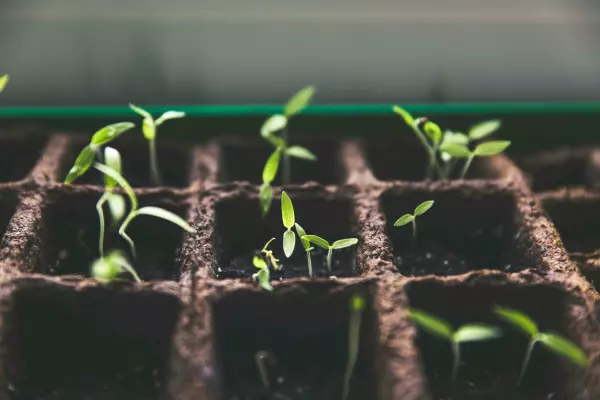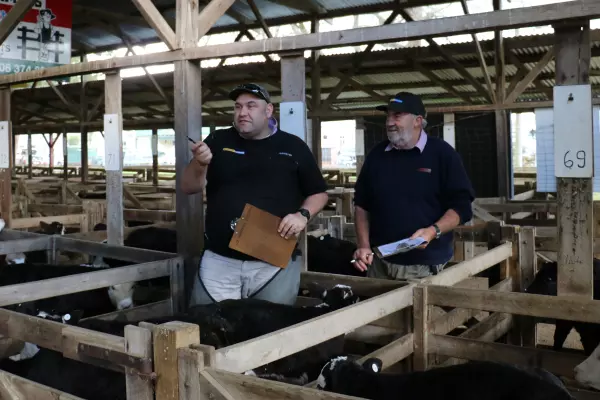Twenty years ago, genetic modification was electoral poison but the tide looks to have shifted judging by this year's Fieldays.
First, it’s important to remember genetic modification or genetic engineering (GE) isn’t banned in New Zealand, it’s just tightly controlled.
Hence National’s science, innovation, and technology spokesperson, Judith Collins, said her party will end the “effective” ban on genetic modification and gene editing.
According to groups like the Productivity Commission, which has long lobbied for a review, the process to obtain permission is so onerous it directly impacts NZ’s productivity.
It is telling that there’s been little negative reaction in the wake of Collin’s announcement.
Twenty years ago, there were protests and dire warnings of “Frankenfood” ranging from widespread protests led by Greenpeace to the in-your-face billboard campaign by Mothers Against Genetic Engineering in Food and the Environment featuring a four-breasted woman hooked up to a milking machine.
A royal commission of inquiry recommended a moratorium on unfettered research and that looked to be the end of it until Peter Gluckman, former chief science adviser to the prime minister, called on New Zealanders to wake up to the science and environmental benefits of synthetic food.
Not everyone is on board
Now, not everyone thinks it’s a good idea.
Organics Aotearoa NZ’s GE spokesperson Philippa Jamieson said NZ benefits from “our point of difference in having a GE-free environment, and it makes sense to retain key markets and premiums”.
She argues that “there are numerous safe, natural, evidence-based ways to mitigate climate change – we don’t need GE”.
The reality is while some people may retain very strong views on the need to keep NZ “GE free”, it’s already all around us.
While no fresh GM vegetables, fruit or meat can be sold in NZ, check your supermarket labels.
NZ’s biggest exporter is on board.
“We strongly support science and innovation. We see genuine value in keeping our options open to the use of technology,” a Fonterra spokesperson said.
“Sophisticated approaches like gene editing and emerging technology could provide solutions for some of NZ’s sustainability and biodiversity challenges which will help us to maintain our world-leading position and competitive advantage."
Benefit
Livestock Improvement Corporation’s chair Murray King said being able to tap into gene editing technology is the sort of thing “we could actually use pretty quickly and to the benefit of everyone”.
Gene editing also made it into the top 10 priorities in KPMG’s latest Agribusiness Agenda for the first time.
“The need to discuss gene editing has been a background issue in The Agenda for the last few years. Concerns have grown that failing to have the debate puts the industry at risk of irreversibly falling behind competitors,” it said.
It noted, however, it’s not a black-and-white issue.
“Our challenge is that a blended, grey position that could generate better environmental and economic outcomes is not available to us at the current time,” KPMG said.
An exporter of horticulture products may optimise their export returns by maintaining a strong genetic technology-free position.
Simultaneously, the forestry sector may seek to adopt some aspects of gene editing to reduce the risk arising from wilding pines or slash over time.
Time to talk
Meanwhile, the government also seems pretty open.
According to Collins, prime minister Chris Hipkins has made a “U-turn” on the issue and called for a review.
Hipkins shot that down.
“I just think it's another one of those ridiculous arguments from the National party that sort of seems to be more about a slogan than any substance,” he said.
According to Hipkins, he hasn’t called for an official review. Rather, he reiterated that it was time to have a conversation.
“It's not something that I specifically have done much on in the last couple of months. I've only been the prime minister for a few months, but it is an area where I think we can proceed cautiously,” he said.
“I certainly believe that change is possible and there is room for change. I don't want to go wholesale into major change until we fully understand the risks around that.
“The science has changed, the certainty around the science has changed and therefore the risk profile has changed.”
According to Hipkins, this opens opportunities to look to do new things.
“There is already scientific progress being made using gene editing. And we're not turning our back on it.”
Last year, the government announced a review of gene editing regulations with a focus on laboratory work and pharmaceuticals.
David Parker, who announced last year's review as environment minister, seemed slightly more cautious than his leader on the wider issues.
According to Parker, it is troubling that National “does not mention the risks that change to our GE free brand pose to our primary exports”.
He also said there is “no evidence that NZ’s cautious approach to GE food and crops has caused NZ any loss. Indeed, for example, we hear from Hawke’s Bay orchardists that it helps maximise our apple export prices”.
Again, clearly worth discussing.
Already happening
Meanwhile, while those conversations start to snowball, work is in fact already underway in many sectors.
Take Thursday, for example.
The government announced a suite of measures to support farmers to reduce their greenhouse gas emissions.
One of those includes $4.3 million invested in soil and grass research, including a faster hybrid breeding system for ryegrass to increase pasture resilience.
Enter GE.
According to the Ministry for Primary Industries (MPI), the project uses several techniques to seek improvements: hybrid breeding, speed breeding, and environmental traits.
Only part of the hybrid breeding has GM or GE components and “it’s important to note that the developed ryegrass would not have any foreign DNA in the final seed sold to farmers,” MPI said.
“Any ryegrass developed using GM or gene editing techniques in a controlled laboratory environment would have to go through the Environmental Protection Agency’s approval process before being developed and released into the New Zealand environment.”
If it meets NZ’s safety requirements, then it can be approved for use in paddocks.
So while people like Gluckman have lauded National’s bid to put the issue on the political agenda, it may already be a done deal in the public’s mind.














